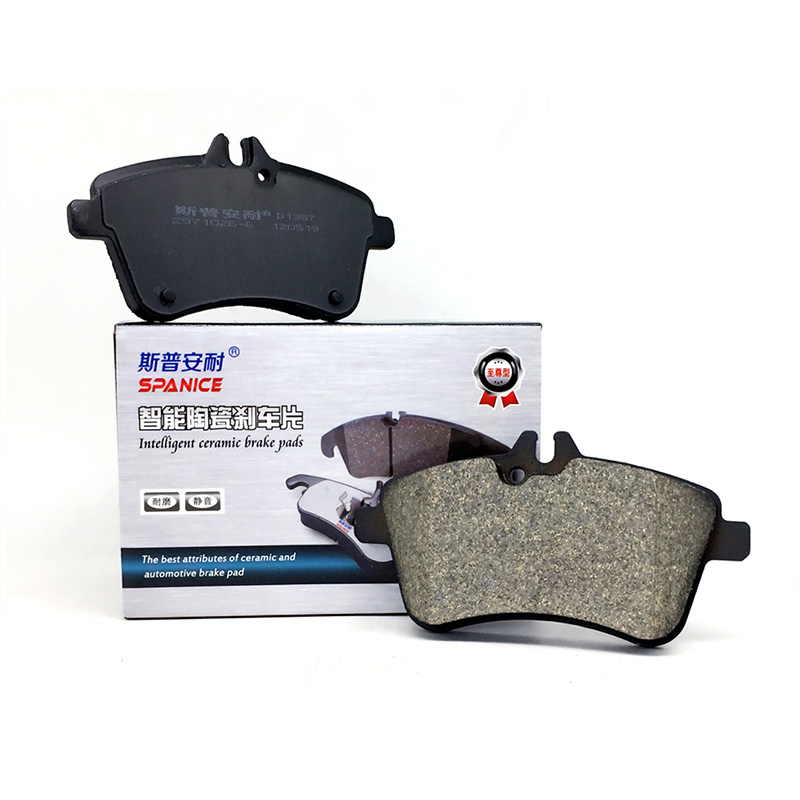Reducing Brake Dust: Exploring Brake Pad Options for Cleaner Wheels
As drivers, we're all familiar with that unsightly buildup of brake dust that accumulates on our wheels over time. This phenomenon is a natural consequence of the friction between brake pads and rotors, resulting in the abrasion of pad material and the generation of particles that stick to the wheels. While it's challenging to completely eliminate brake dust, advancements in brake pad technology have led to options that produce significantly less dust compared to traditional brake pads.
Understanding Brake Dust and its Impact
Brake dust consists of fine particles that result from the wear and tear of OEM brake pads during the braking process. These particles contain a mix of pad material, metal shavings, carbon residue, and other components. Over time, brake dust can create a stubborn layer on wheels that is not only visually unappealing but can also be corrosive to the finish if left unattended.
The Quest for Cleaner Wheels: Types of Low-Dust Brake Pads
Ceramic Brake Pads: Ceramic brake pads have gained popularity for their ability to generate significantly less brake dust compared to their counterparts. These pads are composed of ceramic materials, which are blended with copper fibers or other friction modifiers to enhance performance. Ceramic pads are known for producing finer and lighter-colored dust particles that are less likely to adhere to wheels. This results in wheels that stay cleaner for longer periods, reducing the frequency of cleaning.
Low-Dust Performance Brake Pads: In response to the demand for cleaner wheels, some manufacturers have developed low-dust performance brake pads. These pads combine the benefits of reduced dust production with excellent braking performance. Often, these pads incorporate advanced formulations that focus on minimizing dust generation while maintaining effective stopping power. Drivers seeking cleaner wheels without sacrificing performance might find these pads to be an ideal compromise.

Organic Brake Pads: Organic brake pads, also known as non-asbestos organic (NAO) pads, are another option for those looking to reduce brake dust. These pads are constructed from natural materials like rubber, glass, and resins. While they generally produce less dust compared to semi-metallic pads, it's important to note that they might not offer the same level of braking performance, especially in high-performance or heavy-duty applications.
Considerations Beyond Brake Dust
While the allure of cleaner wheels is strong, it's important to consider other factors when selecting brake pads:
Braking Performance: Safety should always be a top priority. While low-dust brake pads are appealing, they should still deliver the braking performance required for your specific driving needs. Always choose brake pads that are approved for your vehicle's make and model.
Vehicle Compatibility: Different vehicles have different braking system designs and requirements. Ensure that the brake pads you choose are compatible with your vehicle's braking system to avoid potential issues.
Driving Conditions: Consider your typical driving conditions and habits. If you frequently drive in urban areas with stop-and-go traffic, your brake pads might experience higher wear and generate more dust.
Longevity: Some low-dust brake pads might have a shorter lifespan compared to their traditional counterparts. Be prepared to balance the desire for cleaner wheels with the need for periodic brake pad replacements.
The Importance of Maintenance
Regardless of the type of brake pads you choose, regular wheel maintenance is essential. Regularly cleaning your wheels can prevent brake dust buildup from becoming a stubborn issue. Additionally, applying protective coatings or sealants to your wheels can make cleaning easier and provide an extra layer of defense against brake dust corrosion.
In conclusion, while complete elimination of brake dust might be challenging, the choice of brake pads can significantly impact the amount of dust generated. Ceramic brake pads, low-dust performance pads, and organic brake pads are all viable options for those seeking cleaner wheels. However, factors like braking performance, vehicle compatibility, and driving conditions should guide your decision. By making an informed choice and practicing regular maintenance, you can strike a balance between effective braking, wheel cleanliness, and overall driving satisfaction.
599
0
0


Comments
All Comments (0)